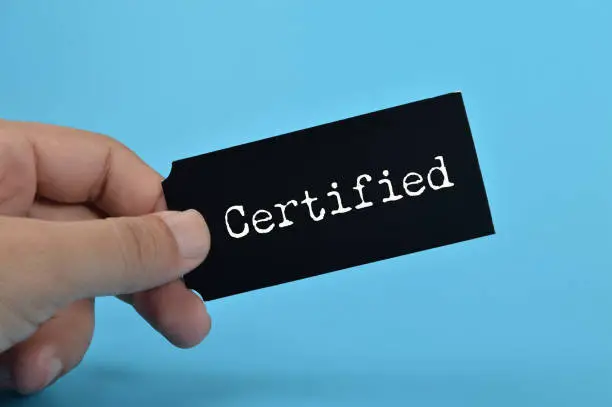Crafting a Compelling Grant Proposal Narrative a step-by- step Guide for Non-profits.
Writing a grant proposal is a crucial task for non-profit organizations as it can help secure funding for their mission and goals. A strong grant proposal narrative is essential to convince grant makers to fund your organization.
The narrative is the story of your organization and the impact you aim to achieve, and it can make a difference between securing the funding or not. In this article, we’ll provide a comprehensive guide on how to craft a compelling grant proposal narrative.
Start with Your Mission
Your grant proposal narrative should always begin with your mission statement. The mission statement is a concise and clear statement of your organization’s purpose, goals, and values. It should reflect your passion and commitment to your cause and be easy for the grant makers to understand. A good mission statement is critical for setting the tone for the rest of your proposal and for establishing the credibility of your organization.
Example 1: Mission Statement of a non-profit organization that helps low-income families access quality healthcare:
“Our mission is to improve the health and well-being of low-income families by providing access to quality, affordable healthcare services and resources.”
Introduce Your Problem
The next step is to introduce the problem your organization aims to solve. This section is where you describe the need for your organization and the impact you hope to make. Be specific about the problem and the people it affects. Use data, statistics, and real-life examples to bring the problem to life and make it relevant to the grant makers.
Example 2: Introduction to the problem of lack of access to quality healthcare for low-income families:
“Despite advances in healthcare, low-income families still struggle to access quality medical care. Many face financial, logistical, and cultural barriers that prevent them from getting the care they need. As a result, they are more likely to suffer from chronic illnesses, disabilities, and premature death. According to a study by the National Institute of Health, low-income families are twice as likely to suffer from chronic illnesses and three times as likely to die prematurely compared to those with higher incomes.”
Explain Your Solution
Once you’ve introduced the problem, it’s time to explain how your organization plans to solve it. This section is where you describe your program, service, or project and how it will make a difference. Be specific and use concrete examples to show how your solution will work. Explain how your solution is unique, and why it’s better than other solutions.
Example 3: Explanation of a solution to address the lack of access to quality healthcare for low-income families:
“To address the lack of access to quality healthcare for low-income families, we plan to build a network of health clinics in underserved communities. Our clinics will offer a range of medical services, including primary care, preventive care, and chronic disease management. Our team of experienced healthcare providers will work with local partners to ensure that our clinics are culturally and linguistically appropriate. Our clinics will also offer extended hours and telemedicine services to make it convenient for low-income families to access quality healthcare.”
Show the Impact
The next step is to show the impact your solution will have. Use concrete and quantifiable data to show how many people will benefit from your program and how their lives will improve. Be specific about the outcomes you hope to achieve and how you will measure your progress. Demonstrate how your solution will make a difference in the lives of those you aim to serve.
Example 4:
Showing the impact of the solution to address the lack of access to quality healthcare for low-income families:
“We anticipate that our network of health clinics will serve over 10,000 low-income families in the first year of operation. Our goal is to improve the health and well-being of those we serve by reducing the burden of chronic illnesses, improving patient satisfaction, and reducing hospitalization rates. To measure our impact, we will collect and analyze data on key indicators such as the number of patient visits, the rate of chronic disease management, and patient satisfaction rates. We believe that our program will not only improve the health of low-income families, but also help to reduce healthcare costs, reduce hospitalization rates, and improve overall quality of life for those we serve.”
Tell Your Story
Finally, it’s time to tell your story. This is where you bring your proposal to life by using real-life examples, testimonials, and case studies. This is a great opportunity to showcase the impact your organization has made in the past and to demonstrate your commitment to your cause. Use personal anecdotes, statistics, and images to illustrate your story and make it more engaging for the grant makers.
Example 5: Telling the story of a non-profit organization that helps low-income families access quality healthcare:
“Our organization has a long history of serving low-income families in the community. We’ve seen firsthand the challenges they face in accessing quality healthcare, and we’re committed to making a difference. In the past five years, our team has worked with local partners to build a network of health clinics, and we’ve seen the positive impact it has made on the lives of those we serve. From providing preventive care to managing chronic illnesses, our clinics are making a real difference in the lives of low-income families. We’ve received countless testimonials from patients who are grateful for the care they’ve received, and we’re proud of the work we’ve done so far. But there’s still much more to be done, and we’re committed to expanding our network of clinics and helping even more families access quality healthcare.”
Conclusion
Crafting a compelling grant proposal narrative is a critical step in securing funding for your organization. By following these tips, you can create a narrative that engages, inspires, and convinces grant makers to fund your cause. Remember to start with your mission, introduce the problem, explain your solution, show the impact, and tell your story. With a little effort and attention to detail, you can create a grant proposal narrative that stands out from the crowd and helps your organization achieve its goals.
Recommended Books for Enhancing Grant Writing Skills
To further enhance your grant writing skills and stay on top of these trends, consider diving into some insightful literature.
Here are a few recommended books:
- The Ultimate Guide to Federal Grant Applications: Techniques for Success – This book is a must-read for anyone looking to navigate the complex world of federal grant applications. It offers practical techniques, insider tips, and a comprehensive understanding of what it takes to create successful federal grant applications.
- Advanced Grant Writing for Nonprofits : Focuses on sophisticated techniques for experienced grant writers. It delves into complex aspects of proposal development, offering strategies for dealing with competitive grant environments and large funding bodies.
- Mastering Grant Writing: A Nonprofit’s Guide to Effective Proposal Development and Submission: This book serves as a comprehensive guide, covering the entire process of grant writing. It includes tips on understanding funders’ perspectives, crafting compelling narratives, and the nuances of proposal submission.
- Becoming the Grant Guru: Freelancer’s Guide to Success : Tailored for freelance grant writers, this book provides insights into building a successful career in grant writing. It includes strategies for finding clients, managing projects, and maximizing the impact of grant proposals.
- The Small Business’s Guide to Winning Grants : This resource is particularly useful for small businesses looking to secure grants. It offers practical advice on identifying suitable grant opportunities, understanding the requirements of small business grants, and crafting winning proposals.
- Grant Readiness Guide: Preparing to Triumph in Funding Opportunities : A comprehensive resource for organizations at various stages of grant preparedness. It provides a roadmap for developing organizational capacity, aligning projects with funders’ goals, and creating compelling applications.
- Her Capital: Unlocking Women’s Small Business Grants: Specifically designed for women entrepreneurs, this book offers guidance on navigating the landscape of small business grants for women. It includes insights into grant sources, application strategies, and tips for leveraging grants to grow a business.
Unlock Your Grant Success!
Join our email list now for exclusive grant-writing tips and unique grant opportunities delivered straight to your inbox. Click here to Subscribe. Don’t miss out!




